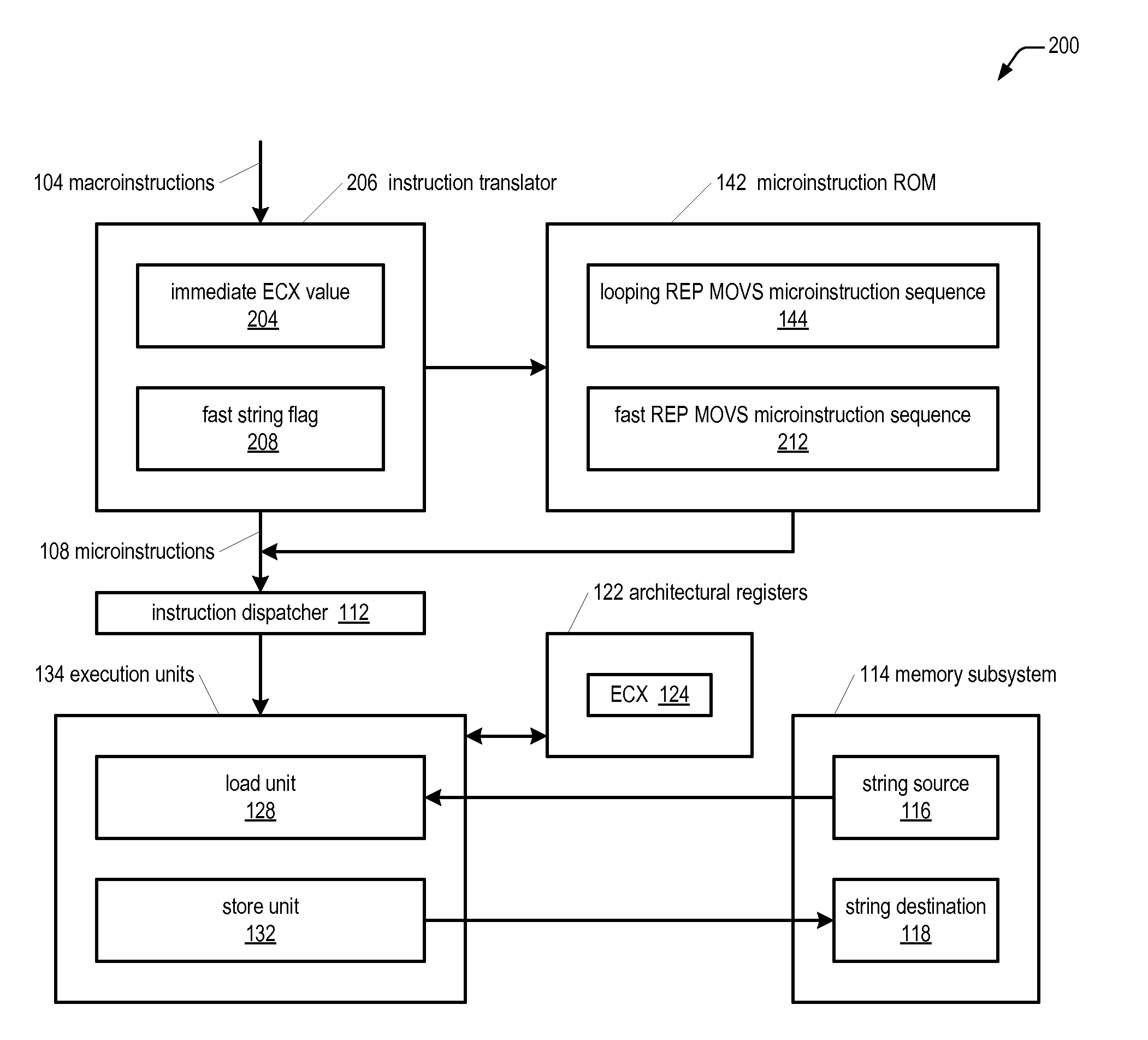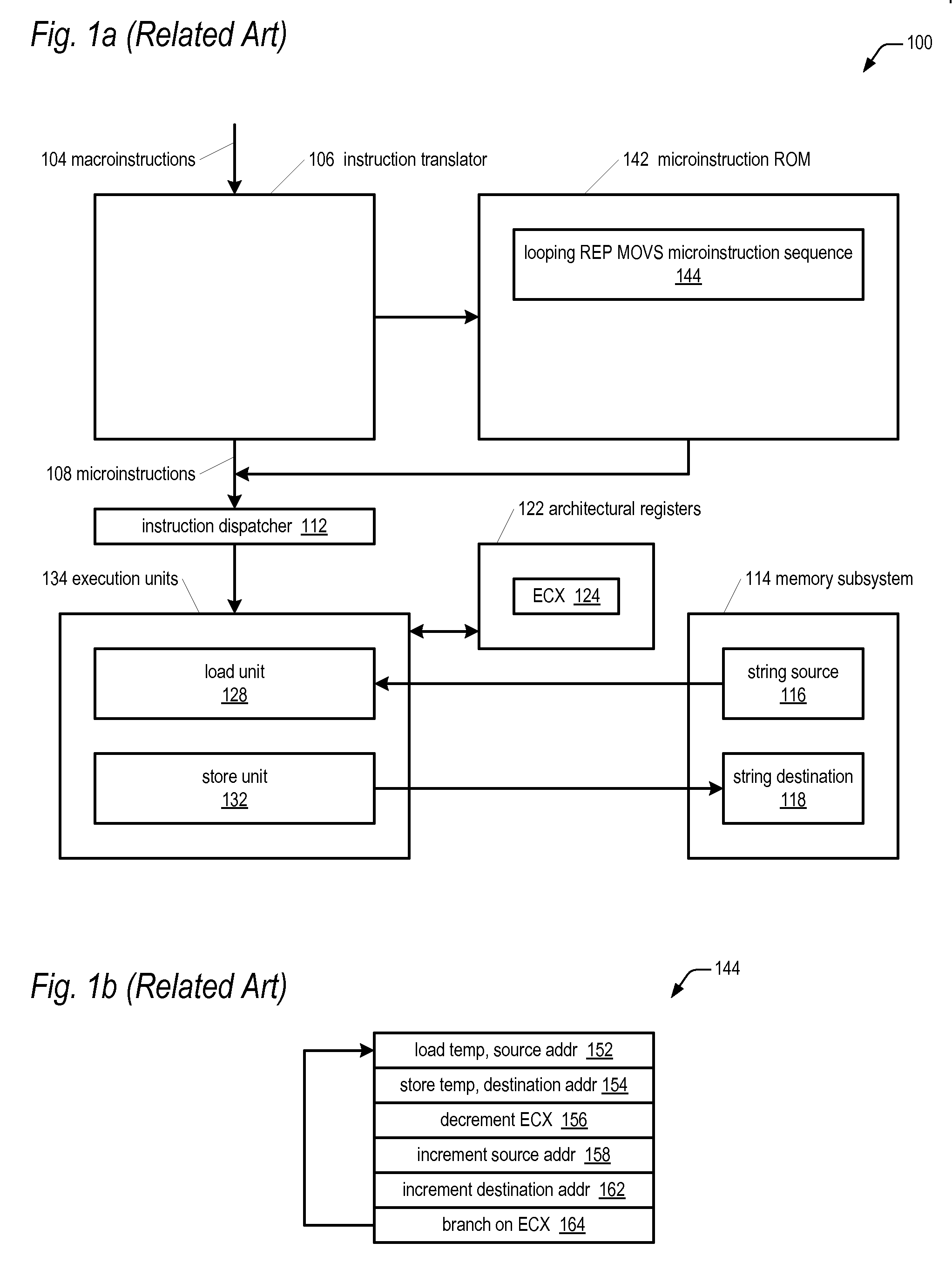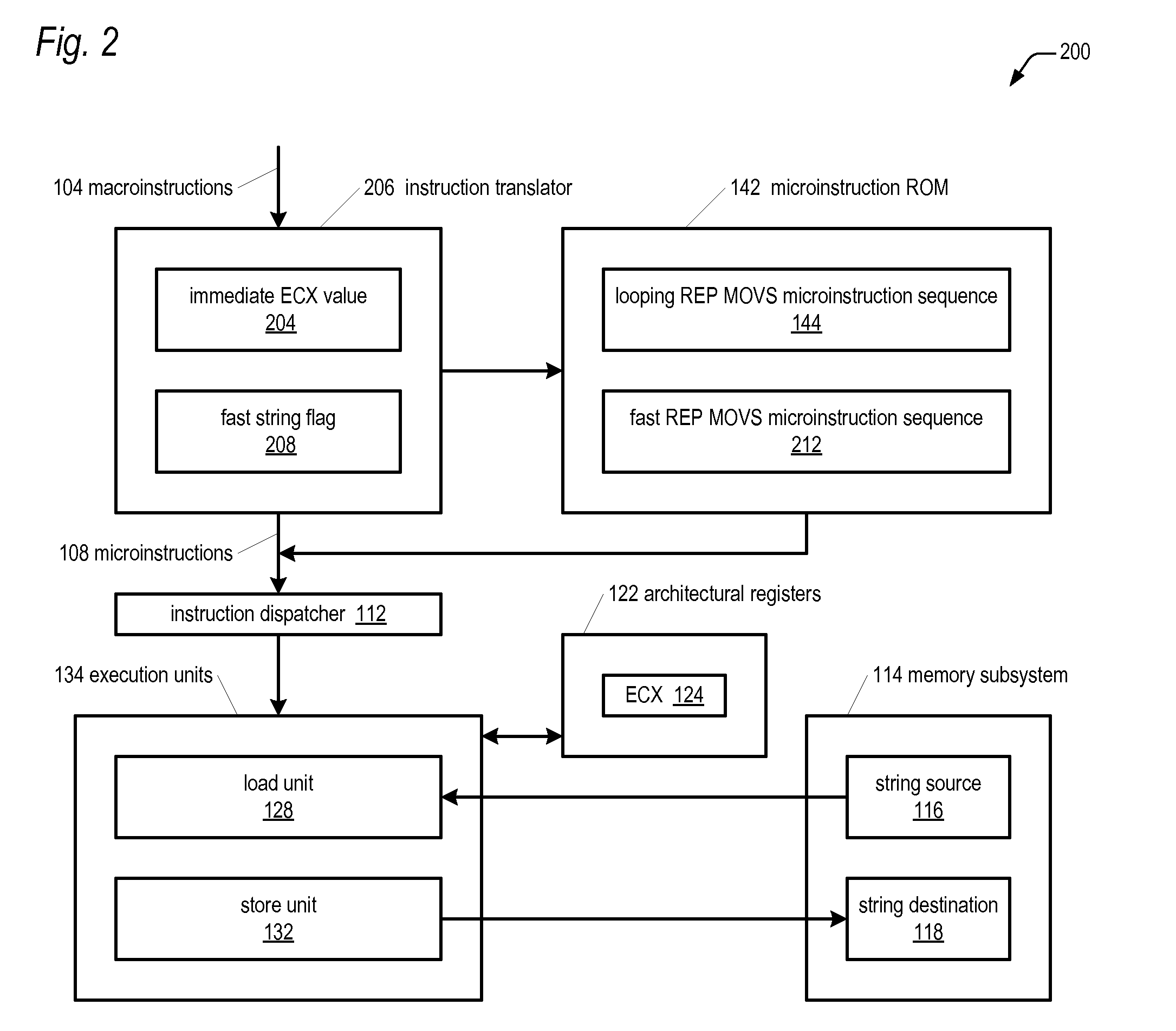REP MOVE string instruction execution by selecting loop microinstruction sequence or unrolled sequence based on flag state indicative of low count repeat
a repeating string and instruction technology, applied in the field of microprocessors, can solve the problems of relatively large penalty to recover from misprediction, poor execution performance of loops, etc., and achieve the effect of improving the execution performance of repeating string macroinstructions
- Summary
- Abstract
- Description
- Claims
- Application Information
AI Technical Summary
Benefits of technology
Problems solved by technology
Method used
Image
Examples
Embodiment Construction
[0023]Referring now to FIG. 1a, a block diagram of a related art microprocessor 100 is shown. An instruction cache (not shown) provides macroinstructions 104 to an instruction translator 106. The macroinstructions 104 include a REP MOVS macroinstruction among other macroinstructions 104. Instruction translator 106 converts macroinstructions 104 into microinstructions 108, where a single macroinstruction 104 may be converted into one or more microinstructions 108. For more complex or less frequently used macroinstructions 104, the instruction translator 106 may obtain the required microinstructions 108 from a microinstruction ROM 142. Microinstruction ROM 142 stores different microinstruction sequences for many macroinstructions 104. For example, a REP MOVS macroinstruction may have one microinstruction sequence 144 and other complex or infrequently used macroinstructions may have different microinstruction sequences.
[0024]Microinstructions 108 are received by an instruction dispatch...
PUM
 Login to View More
Login to View More Abstract
Description
Claims
Application Information
 Login to View More
Login to View More - R&D
- Intellectual Property
- Life Sciences
- Materials
- Tech Scout
- Unparalleled Data Quality
- Higher Quality Content
- 60% Fewer Hallucinations
Browse by: Latest US Patents, China's latest patents, Technical Efficacy Thesaurus, Application Domain, Technology Topic, Popular Technical Reports.
© 2025 PatSnap. All rights reserved.Legal|Privacy policy|Modern Slavery Act Transparency Statement|Sitemap|About US| Contact US: help@patsnap.com



